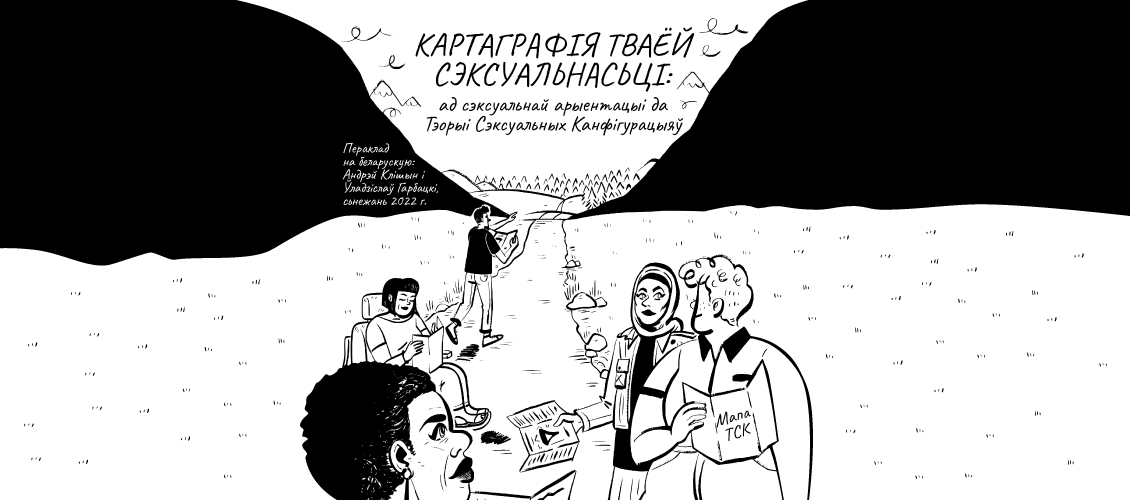This translation was a challenge for researchers to develop Belarusian vocabulary for gender discussions. In many questions – especially the graphical diagrams – the zine only scratches the surface and doesn’t include the rich empirical results of newest studies. However, for people who don’t fit in the cis-hetero paradigm even such a short popular text can be a great discovery of a whole wide world of alternative options for self-identification.
There is a lot of work left in what concerns the pronouns, gendered forms, vocabulary surrounding people of nonbinary gender, which is very hard to work with in gendered languages such as Belarusian. In English it is easy to introduce the pronoun “they” and everything works from there on, but in Belarusian and other continental European languages one needs to think a lot about new grammar. This zine becomes a good starting point for individual gender journeys.
For those who don’t read Belarusian, we highly recommend either reading the English original or one of the other translations (French/Spanish/Italian), or undertaking your own translation into your own language for an exercise.
Sari van Anders tweets in Belarusian and English.
